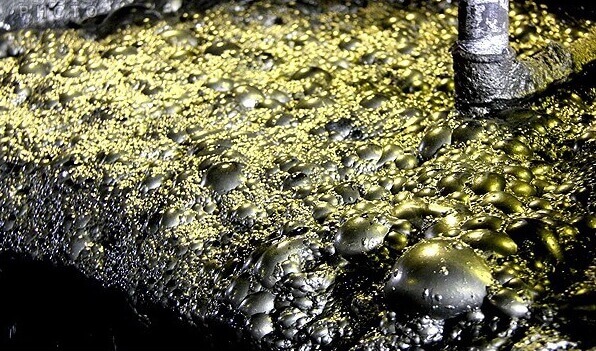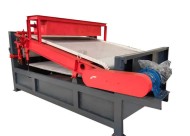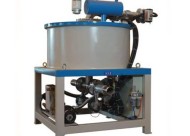Flotation is a complex process that involves the interplay of physical, chemical, and engineering factors. Extensive research and development efforts have been devoted to improving flotation technology, reagent formulations, and equipment design to maximize the recovery of valuable minerals while minimizing environmental impacts and operational costs.
Various parameters must be carefully controlled and adjusted to optimize the flotation process. These include the selection and dosage of flotation reagents, pulp pH, pulp density, aeration rate, agitation intensity, and flotation time. Additionally, the design and configuration of flotation cells and the equipment used can influence the efficiency and effectiveness of the flotation process. We have discussed the “Flotation: Stirring, Concentration, Mass Fraction of Pulp” before, and today we will introduce the other factors that influence the flotation effect.
Key Factors That Can Have a Significant Impact On Flotation
Mineral Properties
The inherent properties of the minerals being processed can greatly affect their flotation behavior. These properties include mineral composition, mineralogy, particle size, liberation, surface chemistry, and surface charge. Different minerals may exhibit varying degrees of hydrophobicity or hydrophilicity, influencing their response to flotation reagents and attachment to air bubbles.
Reagent Selection
Flotation reagents play a crucial role in separating valuable minerals from gangue. Collectors, frothers, modifiers, and depressants are commonly used reagents in flotation. The selection and dosage of these reagents depend on the mineralogy and desired flotation outcome. Proper reagent selection can enhance the hydrophobicity of valuable minerals, stabilize the froth, control pH, and selectively depress unwanted minerals.
Pulp Chemistry
The chemical composition and pH of the flotation pulp can significantly impact the flotation process. The pH level can influence the surface charge of minerals and the performance of flotation reagents. Additionally, ions, such as dissolved salts or metal ions, can affect surface chemistry and mineral interactions, either enhancing or inhibiting flotation.
Particle Size Distribution
The particle size distribution of the ore feed can affect the flotation efficiency. Due to increased interactions with water and slime formation, fine particles can have a higher surface area and tend to be more challenging to float. Coarse particles may have low liberation and poor attachment to air bubbles. Optimizing the particle size distribution through grinding and classification can enhance the flotation performance.
Agitation and Air Dispersion
Proper agitation and air dispersion within the flotation cell are essential for achieving efficient flotation. Agitation promotes mixing the pulp, reagents, and air bubbles, ensuring effective bubble-particle collision and attachment. Insufficient agitation can result in poor flotation recovery. Similarly, the dispersion of air bubbles throughout the pulp is crucial for maximizing the contact between bubbles and mineral particles.
Equipment Design
The design and configuration of flotation cells can impact the flotation efficiency. Factors such as cell geometry, impeller design, froth crowding, and froth washing mechanisms can influence the residence time of particles in the cell, froth stability, and the quality of the concentrate. Optimal equipment design should consider these factors to maximize flotation performance.
Operating Conditions
Various operating parameters, such as pulp density, aeration rate, flotation time, and temperature, can affect the flotation process. These parameters must be carefully controlled and optimized for the desired flotation results. For example, excessive pulp density can hinder bubble-particle collision, while insufficient aeration can limit the availability of air bubbles for attachment.
Common Problems and Solutions
How does ore slime influence flotation, and how to solve it?
If the flotation pulp contains more slime, it will adversely affect flotation.
The main impacts are as follows:
- It is easy to mix in foam products, which will reduce the concentrate grade.
- It is easy to cover the surface of coarse grains and affects the flotation of coarse grains.
- Adsorb a large number of medicaments, increasing the consumption of medicaments.
- Make the slurry sticky, and the aeration condition deteriorates.
The technological measures to solve this problem are:
- Use the thinner pulp to reduce the viscosity of the pulp, which can reduce the inclusion of slime in the foam product.
- Add a dispersant to disperse the slime and eliminate the harmful effect of the slime covering the surface of other minerals.
- Dosing in batches and sections can reduce the consumption of chemicals by ore slime.
- Desliming the flotation material before flotation.
The commonly used desliming method is cyclone-graded desliming.
What is the main effect of air on flotation?
In addition to oxygen, hydrogen, and inert gases, the air contains carbon dioxide and water vapor.
Air has a certain influence on the buoyancy of minerals:
- Hydration occurs when the mineral is broken to expose the fresh surface when it meets water and is hydrophilic. However, when the gas adsorbs to the mineral surface, it can weaken the hydration and cause the surface to be initially hydrophobic.
- Gas and mineral surface are selectively used. Among them, oxygen has a greater impact on the surface of minerals.
- The role of oxygen is to benefit the step-by-step hydrophobicity of sulfide ore. However, if the action time is too long, the mineral surface becomes hydrophilic again. When the gas adsorption conditions are appropriate, it will cause the hydrophobicity of the mineral surface, and it can be floated even without adding a flotation agent (such as dry coal powder). And galena can react with xanthate and float up only through the preliminary action of oxygen.
If we know the above knowledge, it is possible to increase the mineral recovery rate, improve the concentrate grade, reduce environmental impact, reduce operating costs, enhance process control and operational flexibility, and improve project economics in the flotation process. This award contributes to the overall success and profitability of the mining business.
LATEST PRODUCTS
Heavy Plate Feeder
Capacity: 100-240 m3/h Power: 15-45 kW Speed: 0…
Plate Magnetic Separator
【Capacity】8-35 t/h 【Power】1.5-3 kW 【Applic…
Slurry Magnetic Separator
【Capacity】10-100 m3/h 【Feeding Material Densi…










